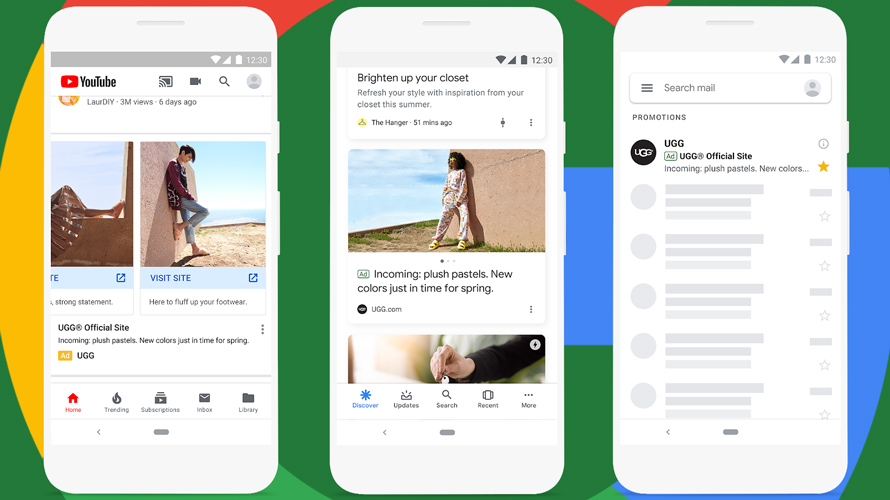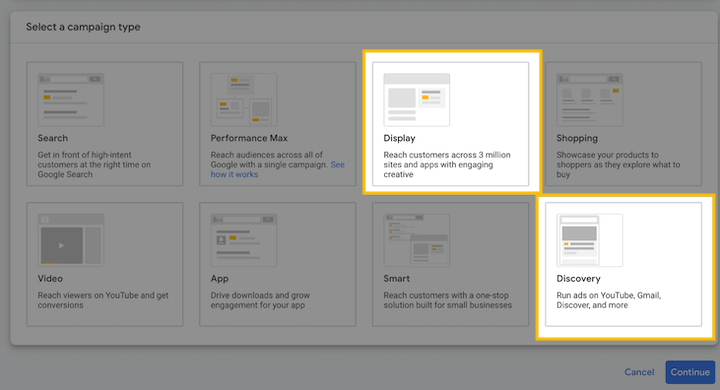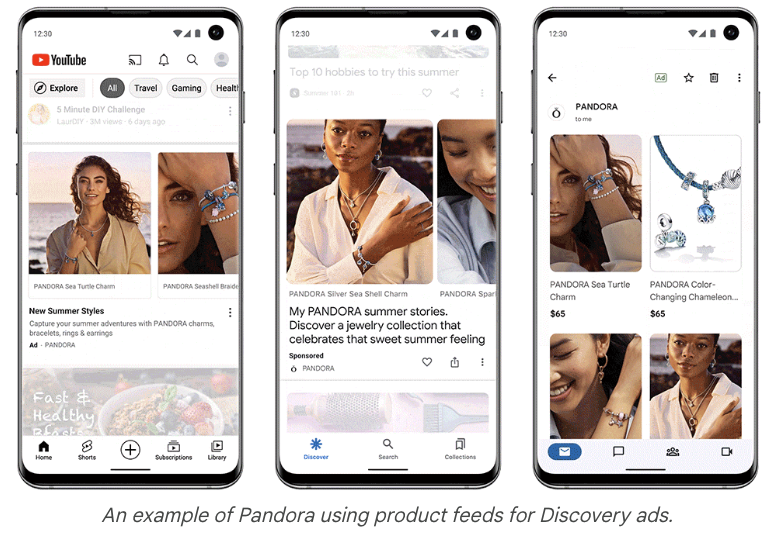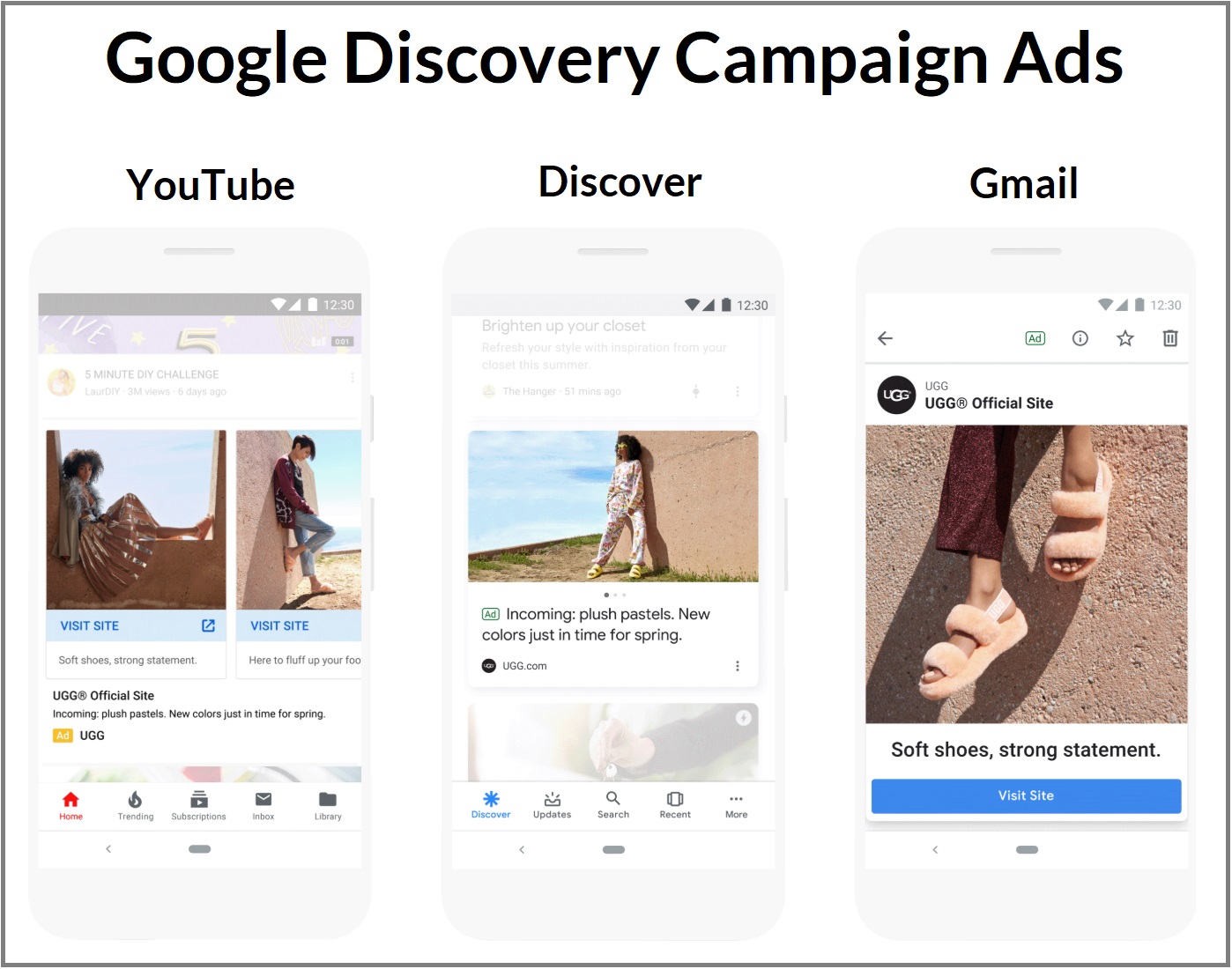
Google Discovery Adshave quickly become a valuable tool for advertisers, offering access to a potential audience of up to three billion people across the Google Ads network. Since their introduction in 2019, many brands have been exploring the capabilities of Discovery Ads as an alternative to other advertising formats like Google Display Ads.
In this article, we will dive deep into what Google Discovery Ads are, how they function, the specifications required to create them effectively, and showcase real-world examples to inspire your advertising efforts.
Understanding Google Discover
Before delving into the intricacies of Google Discovery Ads, it's essential to grasp the concept of Google Discover. Google Discover is a personalized contentfeed that appears on the homepage of the Google app and certain Android devices.
Unlike traditional search, which relies on specific queries, Google Discover delivers content based on a user's past online behavior and interests. Users can influence the content in their Discover feed by rating, hiding, or reporting suggested articles and content, making it akin to the content curation mechanisms of platforms like Facebook, TikTok, and Instagram.
What Are Google Discovery Ads?
Google Discovery Ads are a paid advertising feature that enables brands to showcase their content within the personalized Google Discover feed. These ads can also appear in various positions across the Google Ads network. In essence, Discovery Ads bridge the gap between personalized content delivery and advertising. They offer advertisers a unique opportunity to engage with users who have demonstrated interest or intent related to their products, services, or content.
Discovery Ad Formats
Google Discovery Ads come in two primary formats:
- Single-Image Discovery Ads -These ads feature a single static image. Users can tap on the ad to explore further.
- Carousel Discovery Ads -Carousel ads allow users to swipe through multiple images within a single ad. This format provides a more interactive and visually engaging experience.
We will explore the setup of these ad types in more detail later in this article.
Discovery Ads Vs Display Ads
While both Discovery Ads and Display Ads serve as reach-based advertising models, they differ significantly in terms of ad placement and audience targeting.
Discovery Ads are primarily designed to introduce new users to your brand. Google's algorithms identify and serve these ads to users who have recently displayed interest or intent related to your offerings. Discovery Ads are displayed in three specific locations: within the YouTube app, in Gmail, and in the Google Discover feed.
On the other hand, Display Ads are employed to reach a broader audience. These ads are distributed across the extensive Google Display Network, encompassing a diverse range of websites and platforms. Display Ads might reach users with varying levels of interest in your products or services.
Here's a concise comparison of Discovery Ads and Display Ads:
- Discovery Ads -YouTube app placement, Gmail ad placement, Google Discover ad placement, Custom intent targeting, Retargeting.
- Display Ads -YouTube app placement, Gmail ad placement, Google Discover ad placement, Google Display Network ad placement, Custom intent targeting, Retargeting.
The limited ad placements offered by Discovery Ads, as well as their ability to effectively target specific audiences, make them an excellent choice for smaller businesses looking to manage their advertising campaigns more efficiently. Moreover, using Discovery Ads can help mitigate the risks associated with fraudulent activities often found within the broader Google Display Network.
The Benefits Of Discovery Ads
Utilizing Google Discovery campaigns can provide several advantages for advertisers:
- Improved Brand Awareness - Discovery Ads enable brands to reach a broader audience, enhancing brand awareness beyond what Display Ads can achieve alone.
- Increased Conversions - By targeting actively interested users within their curated newsfeeds, Discovery Ads can drive conversions effectively.
- Retargeting - Advertisers can retarget previous site visitors, keeping their brand at the forefront when these visitors are ready to make a purchase.
- Efficiency - The limited placement options for Discovery Ads allow advertisers to have more control over where their ads appear, streamlining campaign management.
- Time Savings - Automated bidding strategies, such as "maximize conversions" and "target cost-per-action," simplify campaign setup, saving advertisers time and effort.
Google Discovery Ads Specs
When creating Google Discovery Ads, specific details need to be considered to ensure optimal performance. Similar to responsive search ads, these specifications play a crucial role in creating ads that resonate with users. It's essential to ensure that headlines, descriptions, and images are crafted to make sense in various combinations.
Single-Image Discovery Ad Specs
- Headlines - 3-5 headlines of approximately 40 characters each.
- Descriptions - 3-5 descriptions of about 90 characters each.
- BusinessName- Up to 25 characters.
- Final URL- One display URL for your landing page.
- Call-To-Action- Options to choose from a list or allow automated suggestions.
- Images - 3-20 images of specific formats (see below).
- Logo - One 1,200 x 1,200 pixel image.
Discovery Carousel Ad Specs
- Headlines- One headline per carousel card, plus one ad set headline of approximately 40 characters.
- Descriptions- One description of approximately 90 characters.
- BusinessName - Up to 25 characters.
- Final URL- One display URL for your landing page.
- Call-To-Action- Options to choose from a list or allow automated suggestions.
- Images- 2-10 images of the same format (see below).
- Logo- One 1,200 x 1,200 pixel image.
Image Formats
For single-image Discovery Ads, there are three image formats to choose from: landscape, square, or portrait. Each format has its own set of specifications:
- Landscape: Size Ratio: 1.91:1, Recommended Size: 1,200 x 628 pixels, Minimum Size: 600 x 314 pixels.
- Square: Size Ratio: 1:1, Recommended Size: 1,200 x 1,200 pixels, Minimum Size: 300 x 300 pixels.
- Portrait: Size Ratio: 4:5, Recommended Size: 960 x 1,200 pixels, Minimum Size: 480 x 600 pixels.
For carousel ads, only square or landscape images can be used, and all images within a carousel must be of the same format. Mixing and matching different formats are not allowed. For instance, you can include three landscape images or eight square images, but you cannot use a combination of landscape, square, and portrait images.
All images should be in either JPG or PNG format, and it is advisable to use the highest possible resolution to ensure that your images are visually appealing and clear to users.
Google Discovery Ads Examples
Let's explore three real-life Google Discovery Ads examples to gain insights into what makes them effective in their respective placements:
Gmail App Discovery Ad Example
Hammonds, a furniture company, presents a compelling Discovery Ad within the Gmail app. Their ad copy effectively utilizes the character limit to highlight key selling points:
- Free brochure
- Discount pricing
- No deposit
- Buy now, pay later
YouTube Home Discovery Ad Example
Adidas, a well-known brand, utilizes a Discovery Ad on the YouTube Home feed. In this case, the ad doesn't need to describe the product explicitly because of the brand's recognition. Instead, Adidas relies on a stylized square image and concise ad copy to convey the essence of their product.
Google Discover Ad Example
The final placement option is Google Discover, where Android or Google app users access their curated content. In this example, Raylo, a techleasing platform, leverages this placement to showcase its high-value tech offerings and how users can access them. Although there's a slight disconnect between the pricing information in the image and the copy, the overall quality of the portrait image and concise ad copy align well with the landing page.
How To Set Up A Google Discovery Ad Campaign In 6 Steps
Creating a Google Discovery Ad campaign involves several steps to ensure effective delivery and performance:
Step 1. Create A New Campaign
Start by creating a new campaign within your Google Ads account. Choose the campaign objective that aligns with your goals, such as Sales, Leads, or Website Traffic. Note that certain objectives may not allow you to run a Google Discovery campaign.
Step 2. Select Campaign Type
Choose the Discovery campaign type, give it a name, and define your location and language targeting options.
Step 3. Set Bidding Strategy And Budget
Select the most relevant smart bidding strategy for your campaign and set a budget. It's important to note that you cannot manually bid for Google Discovery Ads; automated bidding strategies are the way to go.
Step 4. Create Ad Groups
Create your first ad group and define your targeting options to reach your desired audience effectively.
Step 5. Design Your Ads
Navigate to the Ads and Extensions section, then click the + icon to select either a standard (single-image) or carousel Discovery Ad format. Fill in the required information, including headlines, descriptions, business name, final URL, and call-to-action. Upload your images, ensuring they meet the specified format and quality requirements.
Step 6. Launch Your Campaign
Once you've set up your Discovery Ad campaign, launch it. It's essential to allow a two-week Learning period, during which Google collects data and optimizes your bids. Try to avoid making significant changes to your campaign during this initial phase.
Best Practices For Discovery Ads
To make the most of your Google Discovery Ads campaigns, consider these six best practices:
- Resist Making Changes Too Soon -While it's natural to monitor your campaign's performance, avoid making frequent changes during the Learning period. Give Google time to gather sufficient data for optimizing your campaign effectively.
- Test Continuously -After the Learning period, continue to test and refine various aspects of your campaign, including targeting options, ad creatives, and landing pages. This ongoing experimentation will help you identify the most effective Discovery Ad combinations.
- Use Recommended Image Resolution -High-quality images tend to attract more engagement and conversions. If you incorporate text within your images, do so sparingly to maintain visual appeal.
- Create Multiple Discovery Ads -Experiment with both single-image and carousel formats to determine which type of ad performs best for your campaign objectives.
- Target the Right Audience -Leverage Google's array of targeting options, including remarketing, custom audiences, and similar audiences, to pinpoint your ideal audience. Tailor your messaging to resonate with these specific groups effectively.
- Toggle Automated Targeting - By default, Automated Targeting is enabled, allowing Google to discover new audiences based on its recommendations. If you have a specific audience in mind, consider whether to switch Automated Targeting off for more precise control over your campaign's reach.
Incorporating these best practices into your Google Discovery Ads campaigns can help you achieve better results and maximize the impact of your advertising efforts.
Google Discovery Ads FAQs
What Are Google Discovery Ads?
Google Discovery Ads are paid ads shown in the Google Discover feed, YouTube app, and Gmail. They target users based on interests and intent.
Where Can Google Discovery Ads Be Placed?
They can appear in the Google Discover feed, YouTube app, and Gmail.
How Do Discovery Ads Differ From Display Ads?
Discovery Ads are more targeted and appear in specific places (Discover, YouTube, Gmail), while Display Ads are broader and appear across the Google Display Network.
What Are The Key Specifications For Creating Discovery Ads?
Specifications vary but include headlines, descriptions, a business name, a display URL, a call-to-action, images, and a logo.
How Can I Set Up A Google Discovery Ad Campaign?
Create a campaign, choose the Discovery type, set targeting, select a bidding strategy, create ad groups, and design your ads.
What Are The Best Practices For Google Discovery Ads?
Avoid frequent changes, test targeting and ad creatives, use high-quality images, experiment with ad formats, target the right audience, and consider toggling Automated Targeting.
How Can Google Discovery Ads Benefit My Advertising Efforts?
They can boost brand awareness, drive conversions, offer efficient campaign management, and reach users interested in your products or services.
Are Discovery Ads Suitable For Small Businesses?
Yes, Discovery Ads can be a good choice for small businesses due to their limited ad placements and efficient campaign management.
Can I Use Google Discovery Ads To Avoid Fraudulent Clicks?
Yes, Discovery Ads can help reduce the risk of fraudulent clicks compared to broader Display Ads on the Google Display Network.
Conclusion
Google Discovery Ads represent a dynamic and effective way for brands to connect with a vast and engaged audience across the Google Ads network. With their ability to reach users based on their interests and previous online activity, these ads offer a unique opportunity for advertisers to boost brand awareness, drive conversions, and engage with their target audience.
By adhering to the specified specifications, studying real-world examples, and implementing best practices, advertisers can harness the full potential of Google Discovery Ads and achieve their advertising objectives effectively. Whether you are a small business looking to efficiently manage your campaigns or a larger brand aiming to connect with a more specific audience, Google Discovery Ads can be a valuable addition to your digital marketing strategy.


